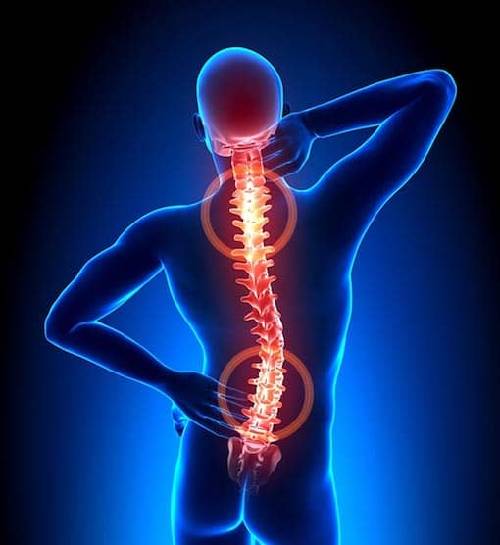Best BACK PAIN Treatment in Trivandrum
- Non-surgical treatment
- Safe & Effective
- OP based Treatment
- Affordable
- quick recovery
Best back pain treatment in Trivandrum - Epione
Welcome to Epione Spine & Pain Care Centre, your trusted destination for best back pain treatment Trivandrum, Kerala. We understand the debilitating effects of back pain and are dedicated to providing comprehensive, personalized solutions to help you reclaim your life without surgery. Explore our innovative treatments tailored to your unique needs and let us guide you towards a future free from the constraints of back pai

Trusted Clinic
Experience unparalleled care at our trusted clinic. Your contentment is our priority.
Expert Doctors
Access the expertise of our renowned doctors for personalized and comprehensive healthcare
Satisfaction Guarantee
Rest easy with our Satisfaction Guarantee – we are devoted to exceeding your expectations.
Pain-Free Living: Your Path to Lasting Relief
Back pain can stem from various causes, including muscle strain, disc herniation, spinal stenosis, or degenerative conditions. Whether you’re experiencing acute discomfort or chronic pain, our expert team specializes in identifying the underlying factors contributing to your symptoms through thorough evaluation and diagnosis.
Back pain is usually associated with the following conditions
- Injuries
- Strain of a muscle or sprain of the ligament
- Lifting a heavy object with poor body mechanics
- Sudden movements that causes too much stress on the low back
- Poor ergonomics
- Repetitive injuries
- Sports injuries
- Degenerative disc disease
- Herniated disc
- Sciatica
- Spondyloarthritis
- Facet arthritis
- Myofacial pain syndrome MFPS
- Spondylolisthesis
- Spinal stenosis.
- Spinal osteoarthritis (spondylosis)
- Vertebral Osteoporosis
- Kidney stones
RISK FACTORS OF LOW BACK PAIN
- Age
- Obese
- Genetics
- Jobs or activities related
- Sedentary lifestyle
- Pregnancy
- Smoking
- Poor loading technique
- Poor posture
- Poor muscle balance
- Weakness or tightness of muscles
TREATMENT OPTIONS
Everyone experiences back pain in a different way. The majority of back pain patients experience relief after a month of conservative therapy, however some experience suffering for several months or even years. Resting in bed is not encouraged. Instead, it is advised to carry on with activities to the best of one’s ability. Regular walking and other simple activities are advised as light exercise. After a few weeks of using conservative approaches, the doctor might recommend stronger medications or different types of therapies. Since decade of experience, we are famed as the pioneers in pain management providing world-class solutions and a heart of perfect care for patients suffering from pain. Get the best pain relief for joint pain with us.
COMMON MEDICATIONS FOR BACK PAIN INCLUDE:
- Over-the-counter pain medications like NSAIDs (non-steroidal anti-inflammatory drugs)
- Muscle relaxants
- Opioids
- Nerve modulators
- Topical rubs and ointments
PHYSIOTHERAPY
There are active as well as inactive treatments. Inactive therapies such as heat and cold therapy, ultrasonic massage, TENS, and others serve to enhance circulation by easing pain, inflammation, and muscular tension. Traditional therapy like stretching and strengthening exercises are examples of active treatments. Back pain patients who receive customised physical treatment can regain function and resume their regular jobs.
NON-SURGICAL PAIN MANAGEMENT
- Transforaminal Selective Nerve Root Block: a small amount of medicine is deposited near the compressed nerve root under flouroscopic guidance to relieve nerve compression
- Epidural injection – Your doctor will insert a small needle into the epidural area and administer a small dose of medication to relieve the pain under fluoroscopic guidance. It is regarded as very effective for the treatment of back pain.
- Facet joint blocks where drugs are delivered into the facet joint
- Spinal cord stimulations: A wonderful and effective therapeutic option that can relieve pain without surgery when the inflammation in and around the affected nerves is too high for an epidural injection.
- Radiofrequency ablation – In this procedure, the affected nerve is degenerated with the help of heat.
- Ozone discectomy
- vertebroplasty & kyphoplasty: An effective non-surgical treatment option for pain due to fracture in the vertebrae

HOW TO AVOID BACK PAIN:
- Keep a healthy weight and nutrition.
- Refrain from spending too much time lying in bed.
- Keep a good posture.
- Put on a pair of relaxed, low-heeled shoes.
- Use a high-quality, medium-firm mattress while you sleep to lessen any spine bending.
- Give up smoking
- Engaging in frequent, appropriate exercise
Our Doctors
Make an Appointment
Dr. Aksar AM. MBBS, MD, FIPM (GERMANY)
Dr Aksar earned his medical degree and he continued his training with an Internship and Residency in Anesthesiology and a Fellowship n Pain Management from Aesculap Academy, Germany, Board certified in Anesthesiology and Pain Medicine, Dr Aksar has extensive experience with the management and interventional procedures used to treat pain
Dr Shareena Musthafa
MBBS, MD (PMR), DNB (PMR), FIPM (PAIN MEDICINE), FCPPM (PALLIATIVE MEDICINE), PGDIP (RHEUMATOLOGY), EULAR CERTIFIED (RHEUMATOLOGY), DIPLOMA IN FOOTBALL MEDICINE
